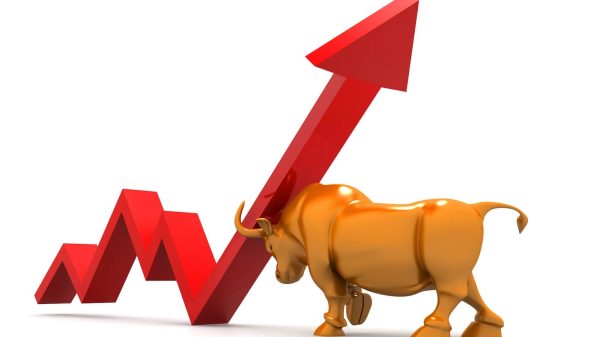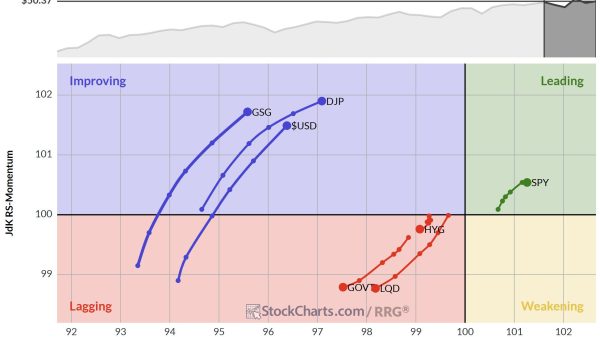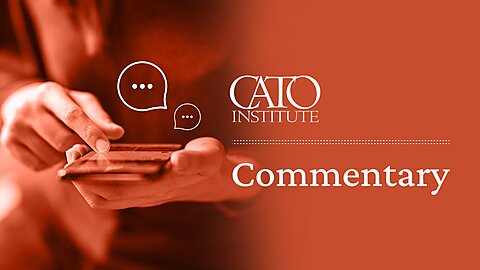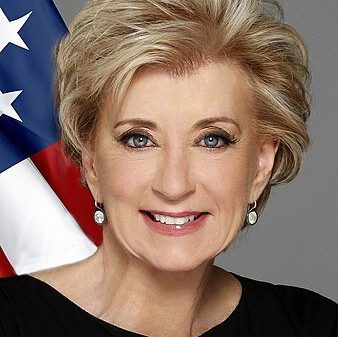Does cheap money and credit make us richer? Does more money and credit create more stuff, or better stuff? Do they make us happier and more productive? Or do these twin forces actually distort the economy, misallocate resources, and degrade us as people?
These are fundamental questions in an age of monetary hedonism. It is time we began to ask and answer them. Millions of people across the West increasingly recognize the limits of monetary policy, understanding that more money and credit in society do not magically create more goods and services. Production precedes consumption. Capital accumulation is made possible only through profit, which is generated by higher productivity, thanks to earlier capital investment. At the heart of all of it is hard work and human ingenuity. We don’t get rich by legislative edict.
How we lost sight of these simple truths is complex. But we can begin to understand it by listening to someone smarter! The great financial writer James Grant probably knows more about interest rates than anyone on the planet. So we should pay attention when he suggests America’s four-decade experiment in rates that only go down, down, and down appears to be over.
The striking thing about the bond market and interest rates is that they tend to rise and fall in generation-length intervals. No other financial security that I know of exhibits that same characteristic. But interest rates have done that going back to the Civil War period, when they fell persistently from 1865 to 1900. They then rose from 1900 to 1920, fell from 1920 or so to 1946, and then rose from 1946 to 1981—and did they ever rise in the last five or 10 years of that 35-year period. Then they fell again from 1981 to 2019–20.
So each of these cycles was very long-lived. This current one has been, let’s say, 40 years. That’s one-and-a-half successful Wall Street careers. You could be working in this business for a long time and never have seen a bear market in bonds. And I think that that muscle memory has deadened the perception of financial forces that would conspire to lead to higher rates.
—James Grant, speaking to the Octavian Report
Do the brilliant young Ivy League quants working at central banks and investment houses really understand this history? Why should they? The baseline cost of capital has been less than 3 percent throughout their careers. Cheap credit and rising stock markets are all they know. Lots of projects make sense when funded with debt rather than equity; or as we might say, with other people’s money. And when those projects go public, the numbers go up!
Until they don’t.
One fears our under-forty financiers really have little understanding of the basic function of interest rates, a function Mises explained so clearly more than one hundred years ago. Interest rates should act as “prices,” as Mr. Grant states, or more precisely, as exchange ratios. They bring together borrowers and savers, thus performing a critical function of capital markets and allocating resources to their best and highest uses.
Yet, in 2022, interest rates are widely viewed as policy tools. They are economic controls, determined and tinkered with by technocratic central bankers when the economy overheats or chills. We expect central banks to “set” interest rates, an impossibility in the long run but also a perverse goal in a supposedly free economy.
What other prices do we want centrally planned? Food, energy, housing? Should the Fed direct how many cars GM produces in 2022, the price of a bushel of wheat, or the hourly wage for an Amazon warehouse employee? Is this the Soviet Union?
Of course not. But those who view money as a political creation are once again prone to fundamental errors. They don’t understand money qua money. They certainly cannot imagine a world without “monetary policy,” which is plainly a form of central planning.
Austrian economists like Carl Menger and Ludwig von Mises illustrated how money can arise on the market as simply the most tradeable commodity, with the most desired features of “moneyness.” We don’t need state treasuries or public banks to issue it. And we should care about the quality of money, much as we care about the quality of the goods and services we exchanged for it.
But in fiat land, that quality goes down, down, and down. Everything politics touches gets worse; why would we expect money to be an exception?
This four-decade experiment in price fixing of interest rates, described as cyclical by Mr. Grant, not surprisingly corresponds with a dramatic rise in the US M1 money supply. In January 1982, the Fed’s “narrow money” was less than $450 billion. In January 2022, it was more than $20 trillion—roughly forty-four times bigger!
We can call this monetary hedonism: a combination of low rates and ever-growing money supply designed to create an illusion of real wealth. Monetary hedonism is an arrangement which encourages our whole society to live beyond its means, using monetary policy rather than direct tax-and-spend policy. It directly benefits both the Beltway and the banking classes, who enjoy an exorbitant political privilege due to their proximity to newly created cheap money. After all, Congress can service $30 trillion+ of debt with interest payments of less than $400 billion—thanks to a weighted average interest rate of only about 1.6 percent on that debt. And it’s awfully nice for spendy politicians to know the Fed stands ready to create an instant market for Treasurys owned by commercial banks.
To be sure, cheap money and low rates benefit all of us in a shortsighted sense. They make the cost of doing business lower and enable corporations to carry more (tax-deductible) debt. They make house payments and mortgages more affordable. They make college and cars and dinners and vacations purchased on credit cheaper. They make it easy and fun to spend.
Yet there is always a price to be paid for unearned profligacy. The hangover follows the party. We all sense it. A reckoning is coming for the inflationary US dollar. That reckoning will come for entitlements, for congressional spending, for deranged US foreign policy, and for Treasury holders.
But this economic reckoning is not the full story. We must also consider the incalculable but rarely considered social and cultural costs.
What happens to society when spending is encouraged and saving is for chumps?
Our grandparents understood the power of compound interest rates. They could save 10 percent of their income at, say, 10 percent interest rates, and their nest egg doubled roughly every seven years. They could get ahead simply, if not easily, through sheer thrift. They could follow the most human of compulsions, the deep-rooted desire to put money away for a rainy day. They could leave something for future generations. Even when consumer inflation approached 10 percent in the 1970s and ’80s, they could get 14 percent on a simple CD or money market account!
Compare their experience to that of a hapless young person today, attempting to save up a 20 percent down payment on a modest $300,000 house. In 2022, with inflation at least 6 points above simple savings rates, this seems like a pipe dream.
This is the perversity of our times: with inflation rates higher than savings rates, the overwhelming incentive is to spend and borrow rather than produce and save.
Bitcoiners already understand the problem. The simple economic concept of time preference explains so much: some people are more than willing to forego consumption today to reap a larger reward later—even if that “later” is beyond their lifetimes. Time preference is the only way to make sense of interest rates and their critical function in society; interest rates reflect the relative preferences of borrowers and savers. Manipulation of interest rates by central banks severs this critical mechanism, allowing bubbles to occur in the form of new credit without new saving.
Without interest rates determined by time preference, society’s signals become mixed up. We all understand, axiomatically, why humans prefer something today (certain) over something in the future (uncertain). We may die unexpectedly, our financial positions could change radically due to unforeseen events, or external conditions could influence our desires. We all understand borrowing money to buy a dream home at age forty instead of paying cash at age ninety. We all understand why lenders, given the uncertainty and forbearance that goes with lending, want to be paid interest for their risk.
It is a matter of time.
Everything we do in this corporeal world has a temporal element. When governments or central banks interfere with money and interest rates, they distort the vital information provided by real people’s relative time preferences.
Hans Hoppe, in his infamous Democracy: The God That Failed, goes further—describing time preference as the essential civilizing or decivilizing element in society.
The saver-investor initiates a “process of civilization.” In generating a tendency toward a fall in the rate of time preference, he—and everyone directly or indirectly connected to him through a network of exchanges—matures from childhood to adulthood and from barbarism to civilization.
When lots of people save and invest, across society, we call it capital accumulation. And as Hoppe posits, this is not just economic—it is cultural and civilizational. Thrifty people like our grandparents, generation after generation, bequeathed to us an almost unimaginable world of affordable food, water, habitation, transportation, communication, medicine, and material goods of every kind. They did this out of love and sacrifice, but they also did it because the monetary system rewarded saving.
Today, the opposite is true. Monetary policy across the West is an agent of decivilization. It upends the natural, innate human impulse to save for a rainy day and leave our children better off. It encourages consumption over production, profligacy over thrift, and political promises today that will be paid for by savers and taxpayers tomorrow. Monetary policy degrades and deforms the economy, but ultimately its corrosive effects impact the broader culture.
In short, it makes us worse people.
Does bitcoin fix this? Maybe. In the eyes of many maxis (or “bitcoin realists,” per Cory Klippsten), certainly. But time is running short. We face a toxic mix of high–time preference junkie politicians and central bankers who are only too willing to provide the fix. We are depleting capital and borrowing against the future. We consistently display high time preference, both as individuals and as a society. This cannot end well for our children and grandchildren.
It is past time for all of us to demand better money, not better monetary “policy.” It is time for money to comport with human nature and reward the saving impulse. It is time for us to reconsider our bequest to future generations and make their lives better and more prosperous than ours.
Monetary hedonism, in the form of low interest rates, is coming to an end. The hangover will not be pretty. Readers would be well served to prepare themselves and act accordingly. Politicians and bankers are unlikely to do this for us.
[This article first appeared in the fall 2022 issue of Bitcoin magazine]
























